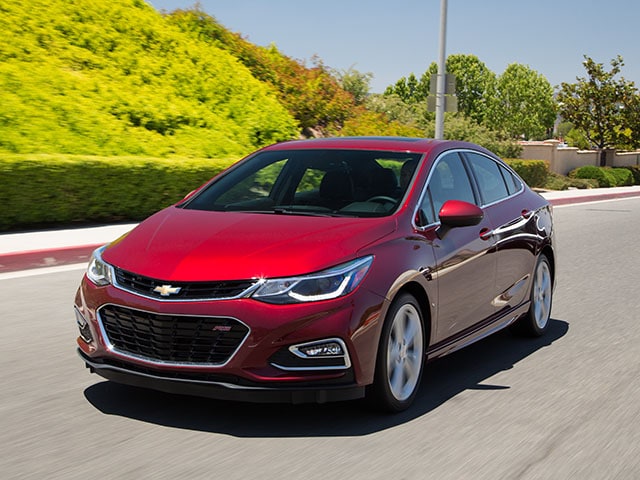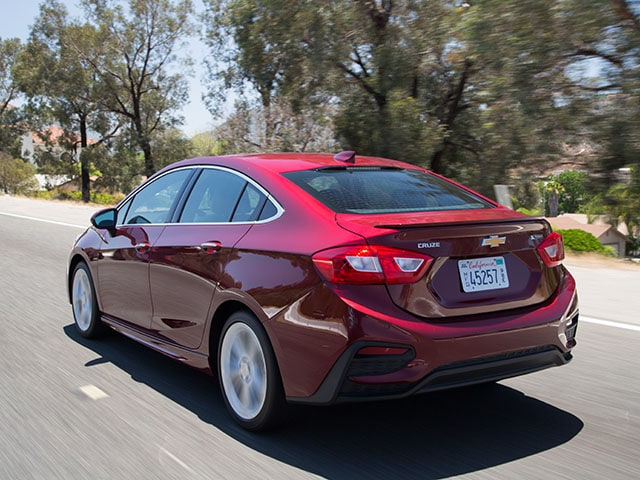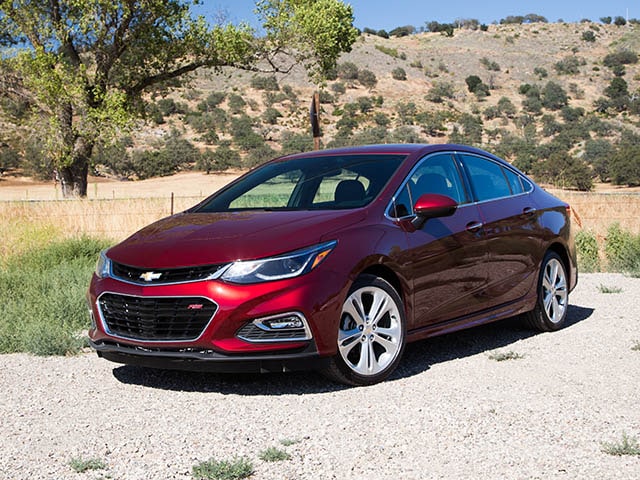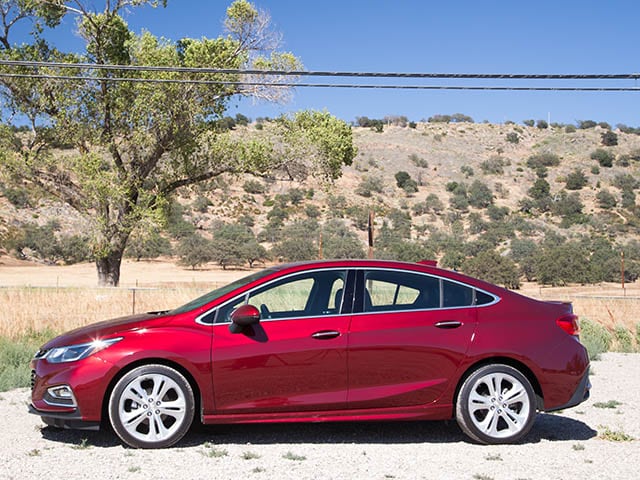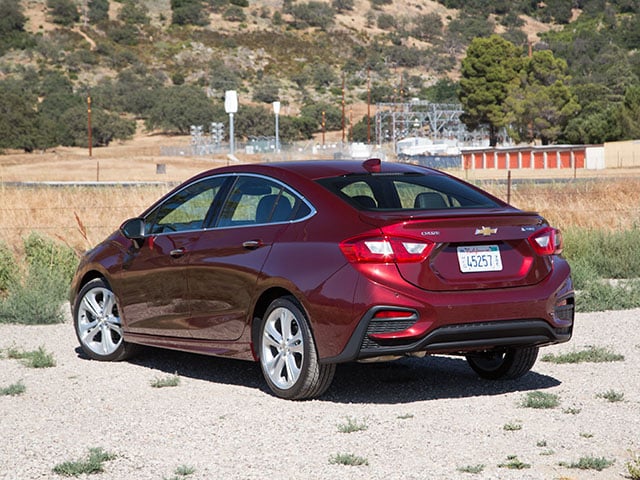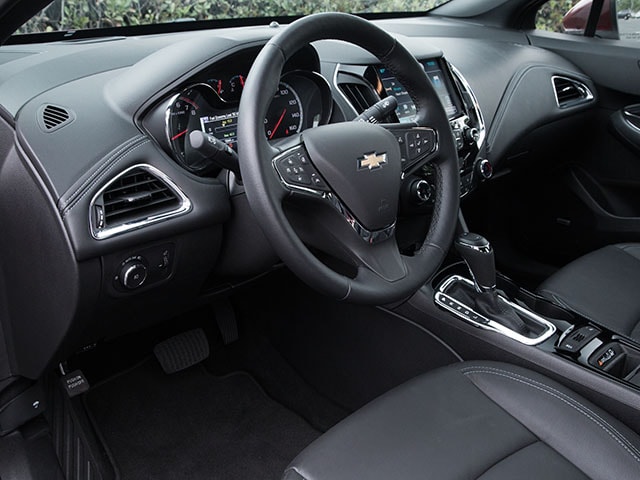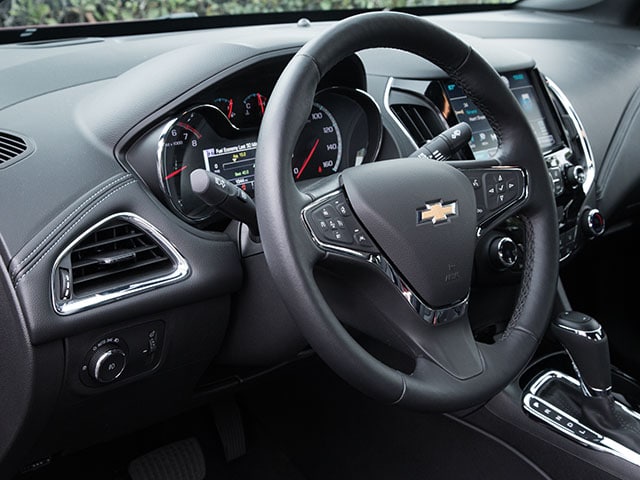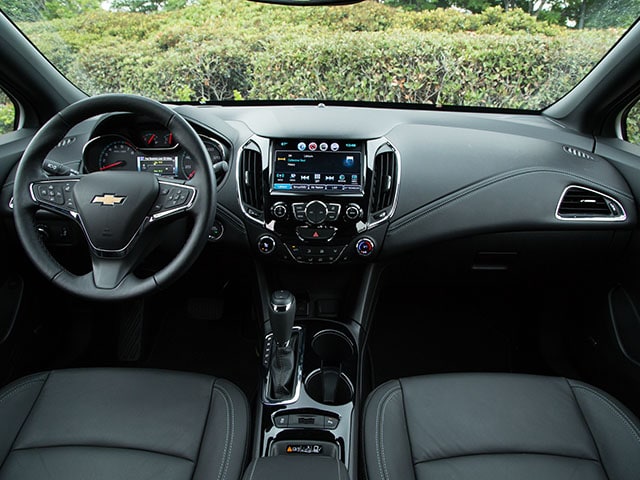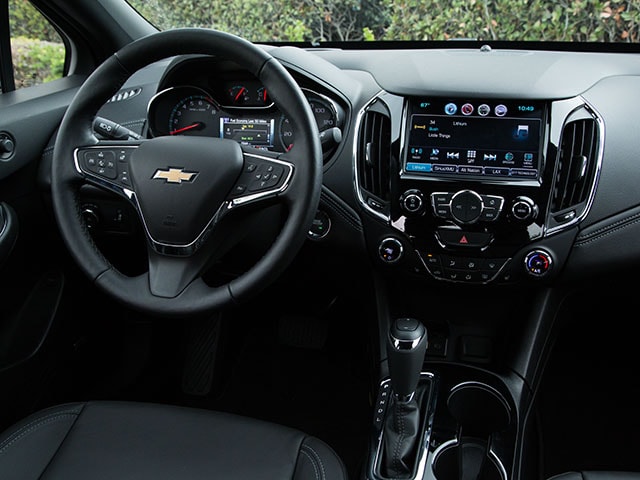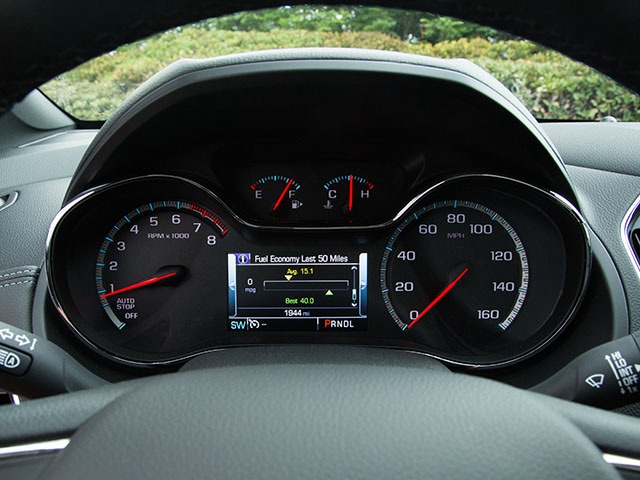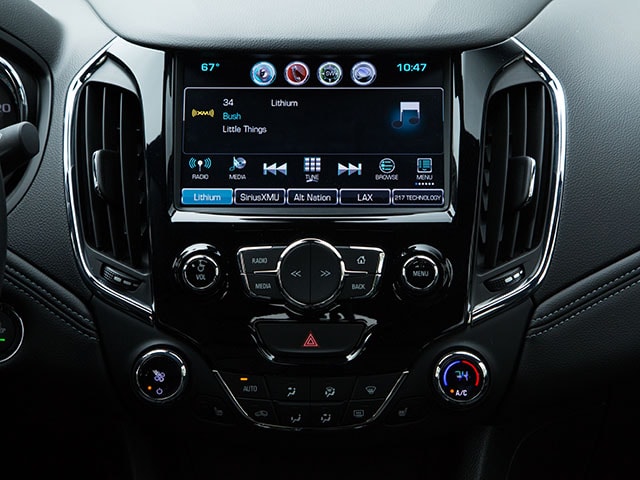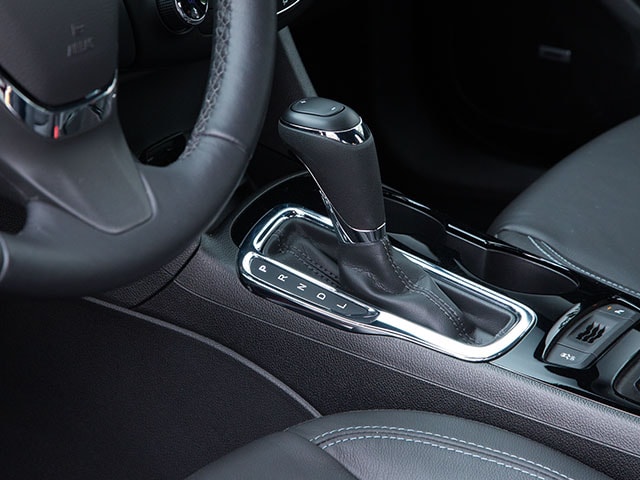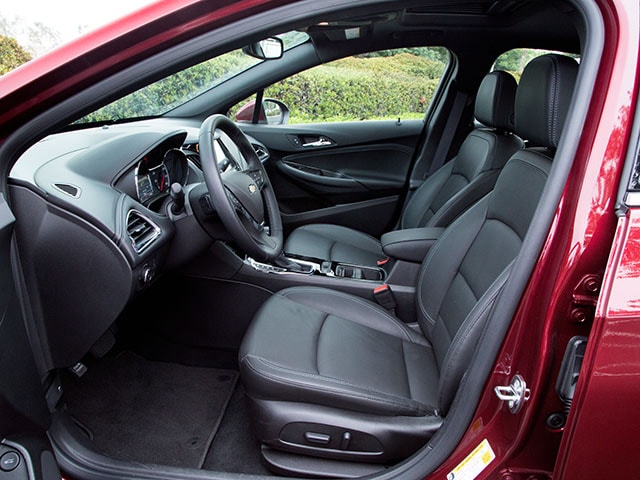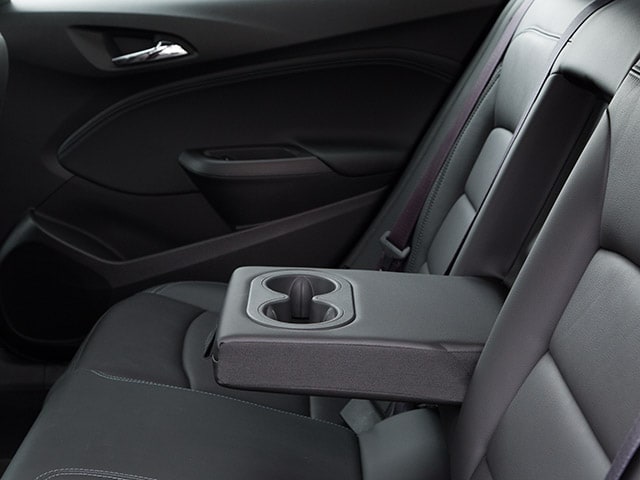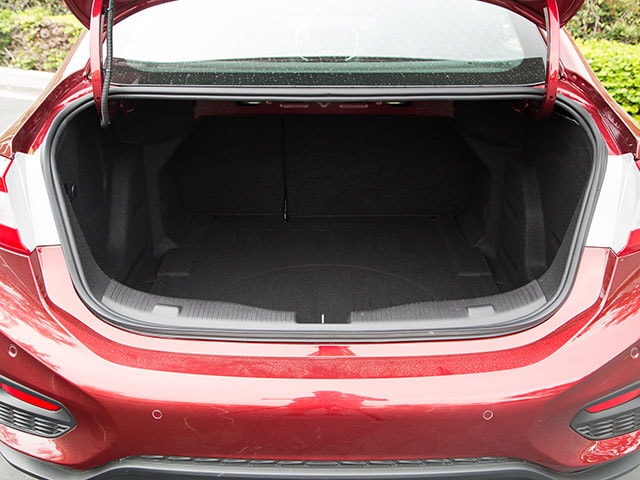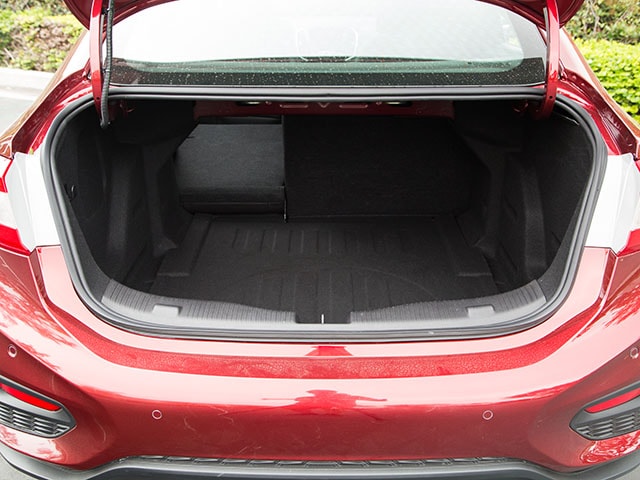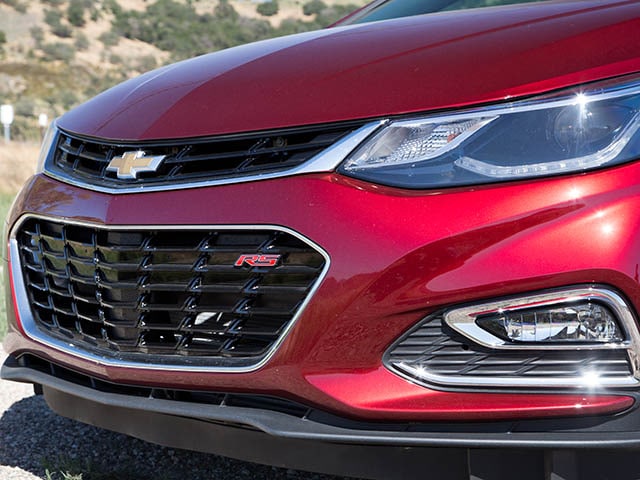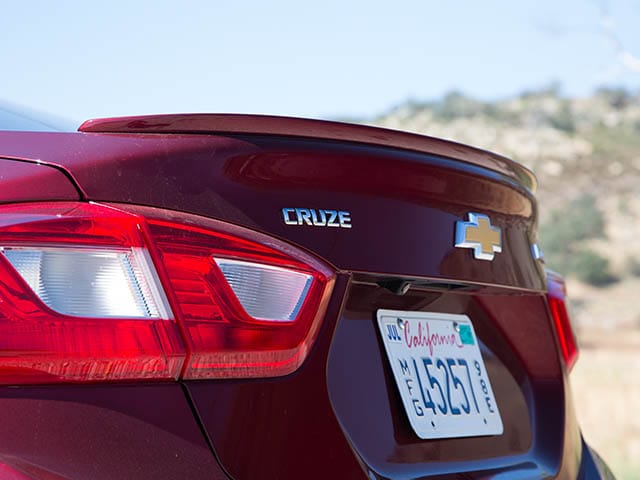New and Improved

Starting Price: $17,495 | Build
Above Average: City and sporty driving experience, infotainment
Below Average: Rear seat space, fuel economy
Consensus: A good-looking and overall solid player lacking key features
400 miles in 134 words
In most respects, the 2016 Chevrolet Cruze is a terrific car. It’s fun to drive, looks great, offers an excellent infotainment system that includes Apple CarPlay, and the ergonomics are spot on. We loved our time behind the wheel. So it’s a bummer that it comes up short against its competitors in some key areas, and yet costs more. Even though it boasts the lowest base price of the group, the as-tested price came in at about $1,000 more than the next most expensive Hyundai Elantra. More importantly, we’re not sure what you’re getting for it: the Cruze lacks active cruise control, adjustable lumbar support, a big back seat, and advanced features like the electronic parking brake on the Honda Civic. Fuel economy also trailed the rest of the pack, despite good EPA estimates.
A Closer Look
There’s no doubt the Cruze is a pleasure to drive, but there’s more to it than that. Here’s a quick look at how the Cruze compares across nine key categories, followed by deeper dives into each one.
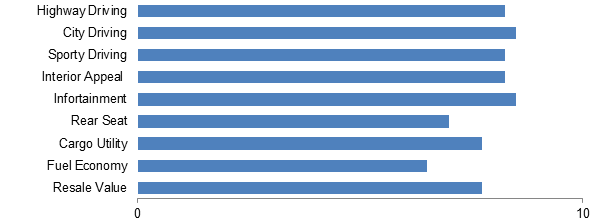
Highway Driving
Our drive route included a 100-mile stretch from San Diego back to the Los Angeles area up Interstate 5. The Cruze was one of the quietest cars in the group, and the transmission and engine responded quickly to throttle inputs. Sadly, active Cruze control — I mean, cruise control — isn’t available on the little Chevy. The available lane-keeping assist was theoretically helpful considering the Cruze’s somewhat sensitive steering, but it had trouble finding anything other than solid lines, completely ignoring the well-marked dashed highway lines. Despite that, the Cruze is a solidly comfortable long-distance driver.
City Driving
Around town, the responsive engine, quick shifting transmission and agile handling of the Cruze helped it tie the Honda Civic for best in test. The turbocharged 4-cylinder engine generates plenty of power, and with only a hint of turbo lag. The steering that was too quick on the highway felt right at home here, making the Cruze feel exceptionally maneuverable and the small footprint made it easy to park as well. The Cruze comes standard with start-stop technology that shuts off the engine at stoplights. Unlike most systems, it doesn’t have an off switch. Also unlike most systems, it was so quiet and unobtrusive that we really didn’t mind.
Sporty Driving
Credit the sharp and quick steering, taut suspension and quick-shifting 6-speed automatic — along with manually selectable gears — for making the Cruze a fun driving partner on a twisty two-lane. The steering felt responsive and just right when it came time to push the Cruze, and the ability to hold a gear makes it easier to maximize the turbocharged engine, an advantage over the Honda Civic that helped the Cruze overcome that car’s better overall driving dynamics.
Interior Appeal
Like the exterior styling, the interior of the Cruze looks sporty and modern. Most of us thought the seats were comfortable, but one driver derided their lack of adjustable lumbar support. In light of the Cruze being the most expensive car in the test, we were a little disappointed by some of the materials choices, such as the cheap-feeling headliner and some of the door panel plastics. Regardless, for the driver and front passenger, there was ample space and storage, the interior looked modern, the doors slammed with a satisfying thunk, and overall the Cruze feels like a high-quality vehicle.
Infotainment
We love the big icons, easy usability, and general user-friendliness of the MyLink system in the Cruze. The large screen was bright, and we especially like the fact that major controls, such as volume and radio tuning, are still controlled by knobs and not the touch-screen interface. Another big plus was the integration of Apple CarPlay and Android Auto, which allows you to use your phone’s interface on the infotainment screen.
Rear Seat
This was an unfortunate stumbling block for the Cruze. In a class of cars that has been growing in size recently — the other three vehicles we tested are classified as "midsize" by the EPA — the Cruze trails in interior space, and the rear seat especially is cramped. The seatback is too upright, the seat cushion too hard, and knee- and toe-room under the seats trailed the competition. At least the door armrests are padded, and the wide center armrest incorporates cupholders. We also liked the incorporation of a 120-volt outlet in back.
Cargo Utility
With only 0.7 cubic foot separating the biggest from the smallest trunk, cargo utility was the one area that was basically a wash. With the second-biggest trunk in the test, the Cruze certainly maximizes its space nicely, and the split-fold seatbacks make it easier to haul longer loads. While it’s true that the Cruze lacks in-trunk releases for those seatbacks, the cars that do have them still require you to open the passenger door to put the seatback all the way down, mitigating that advantage.
Fuel Economy
Despite EPA ratings that virtually mirror the Honda Civic, the Cruze’s fuel economy during our test trailed notably far behind the rest of the field, and nearly 5 mpg behind the Civic. What gives? We’re not really sure. During some stretches it should be noted that our 50-mile average was well over 40 mpg, so it could be that what makes the Cruze fun to drive in our sporty sections — good throttle response and the ability to hold a gear — is also what hurts it when it comes to fuel economy.
Resale Value
Conventional wisdom says domestic small cars don’t have good resale, but the 2016 Chevy Cruze puts a lie to that. While it’s beaten out by the Honda Civic and the Hyundai Elantra, the Hyundai is ahead only slightly, and the Cruze trounces the Sentra.
Inside and Out: 2016 Chevrolet Cruze Premier

